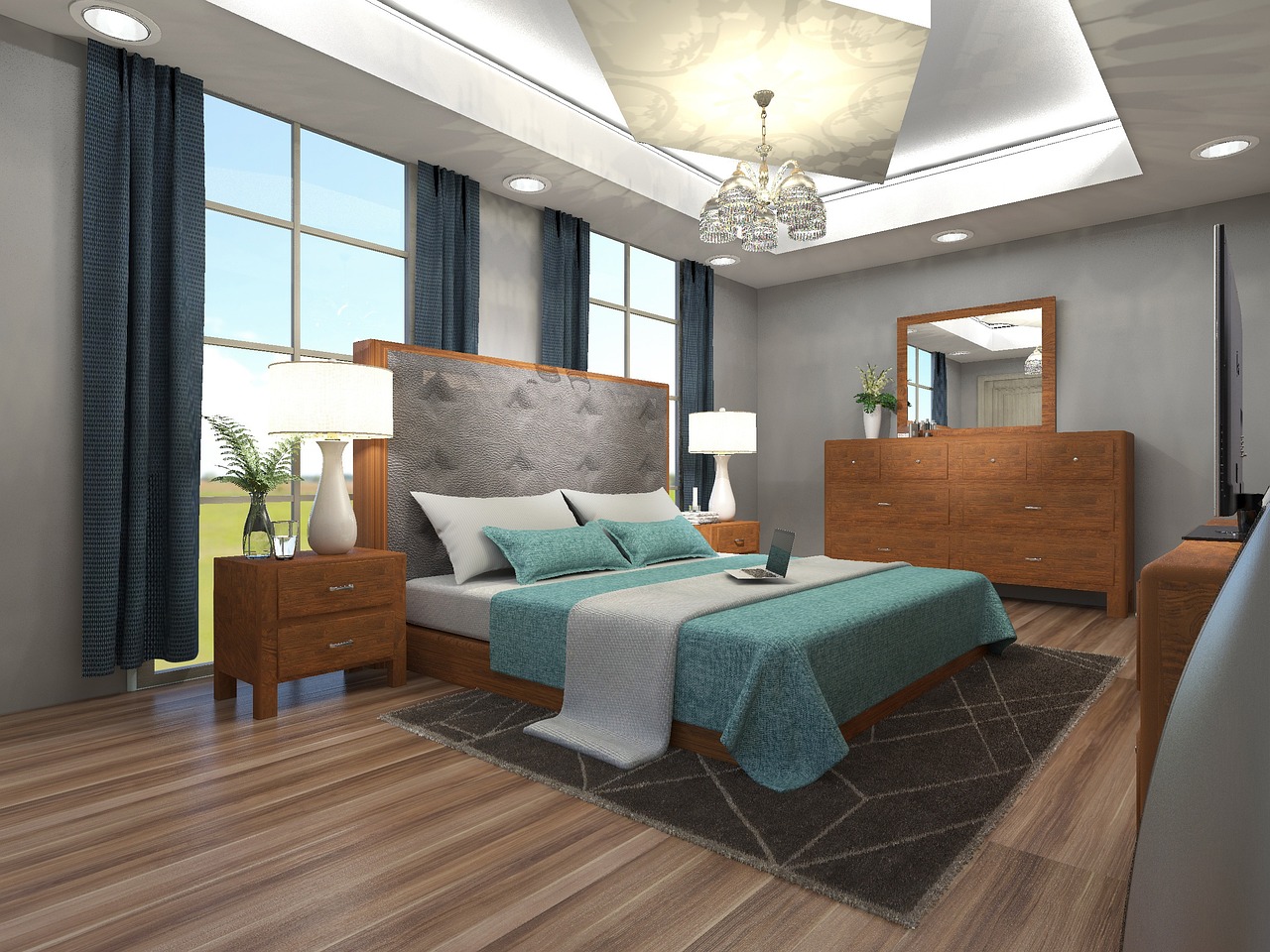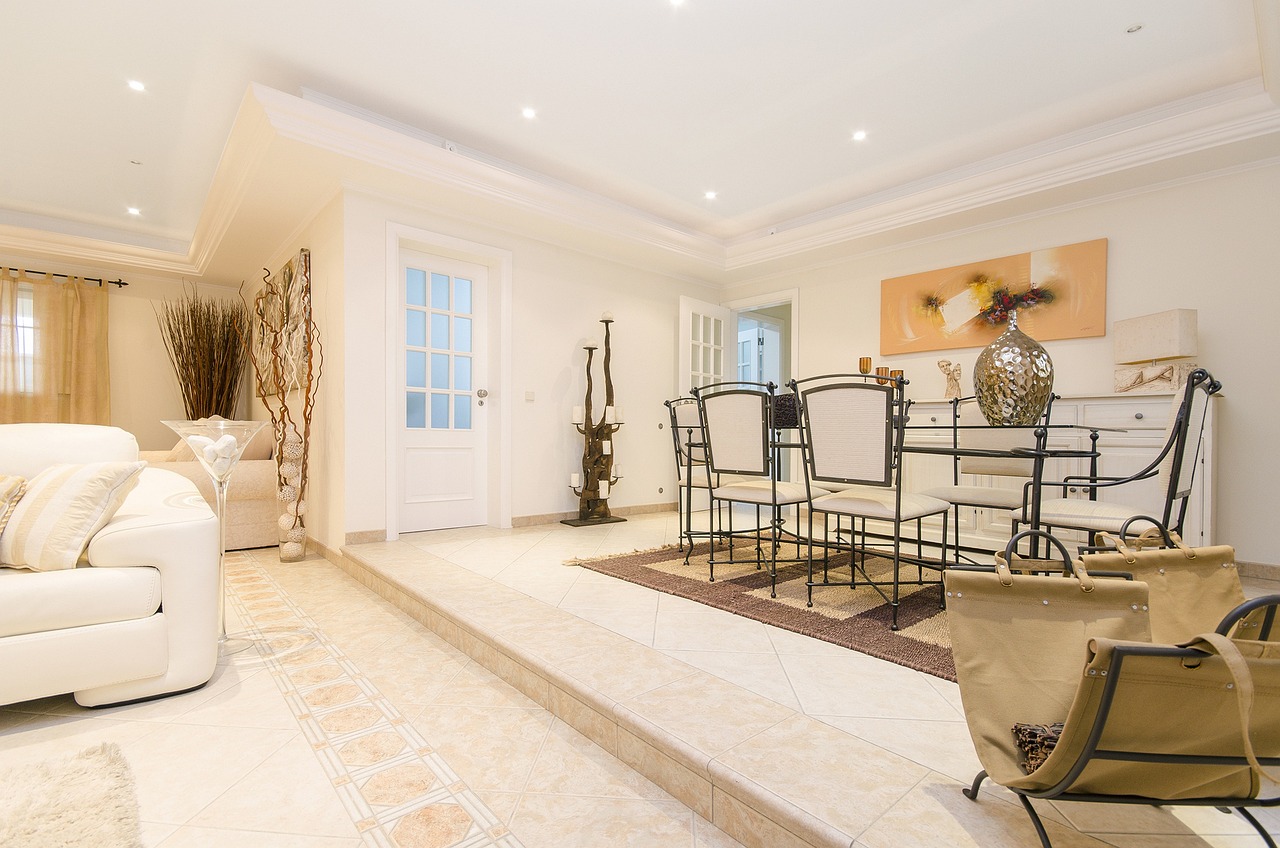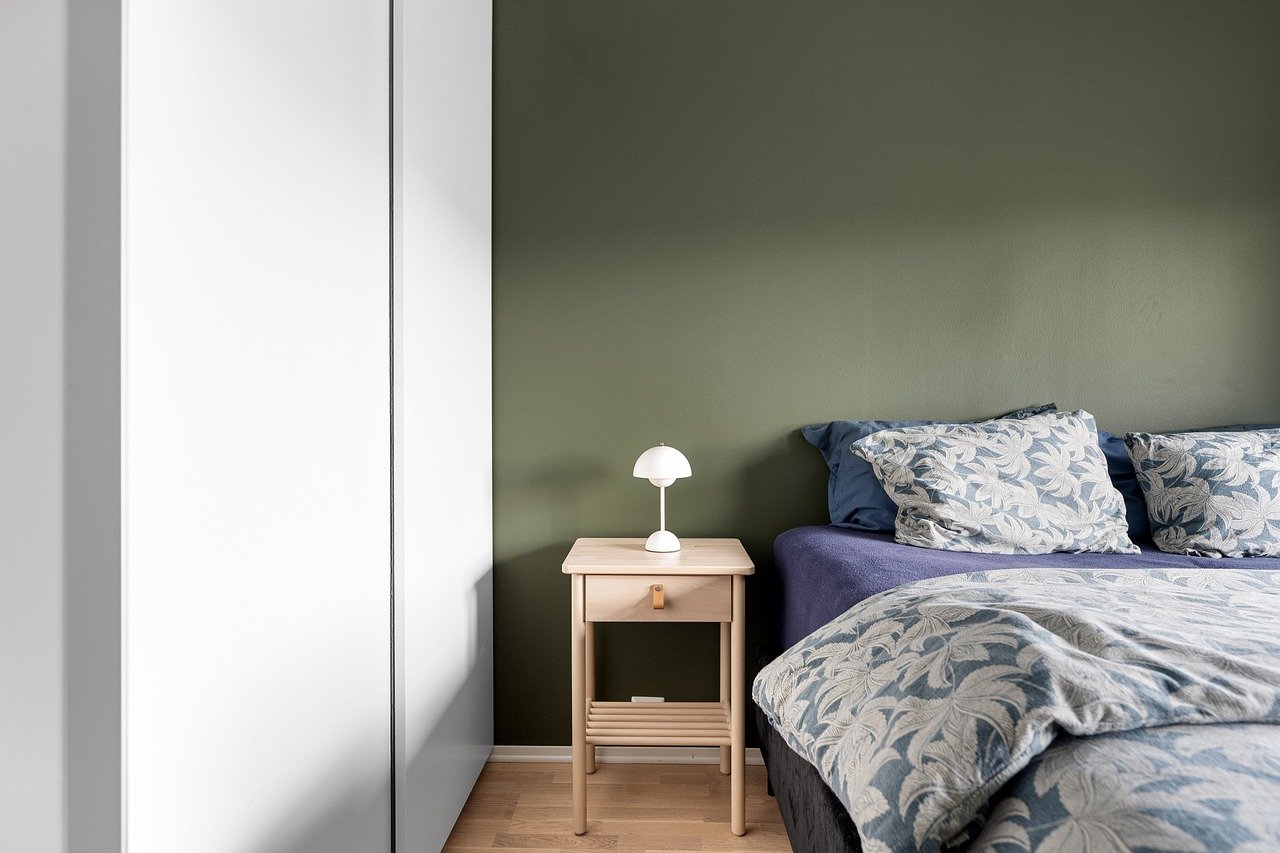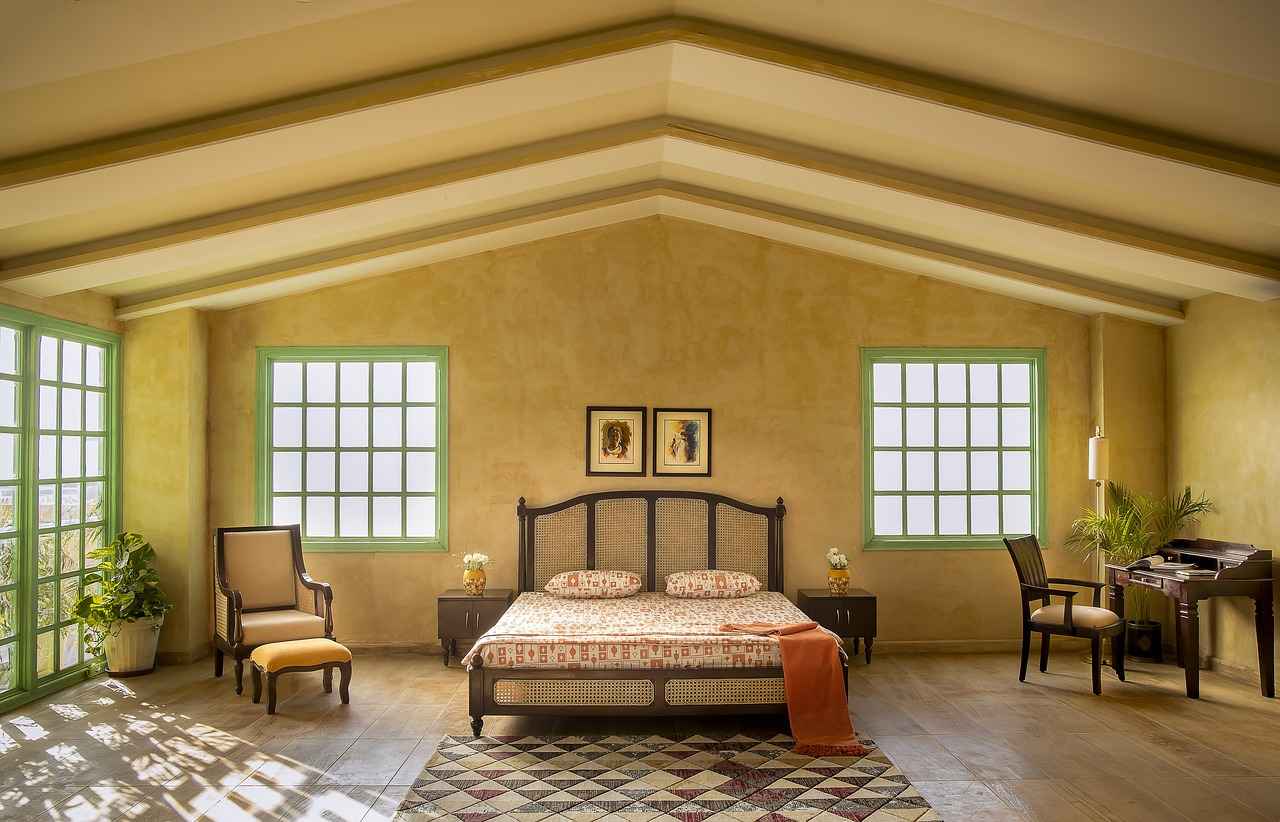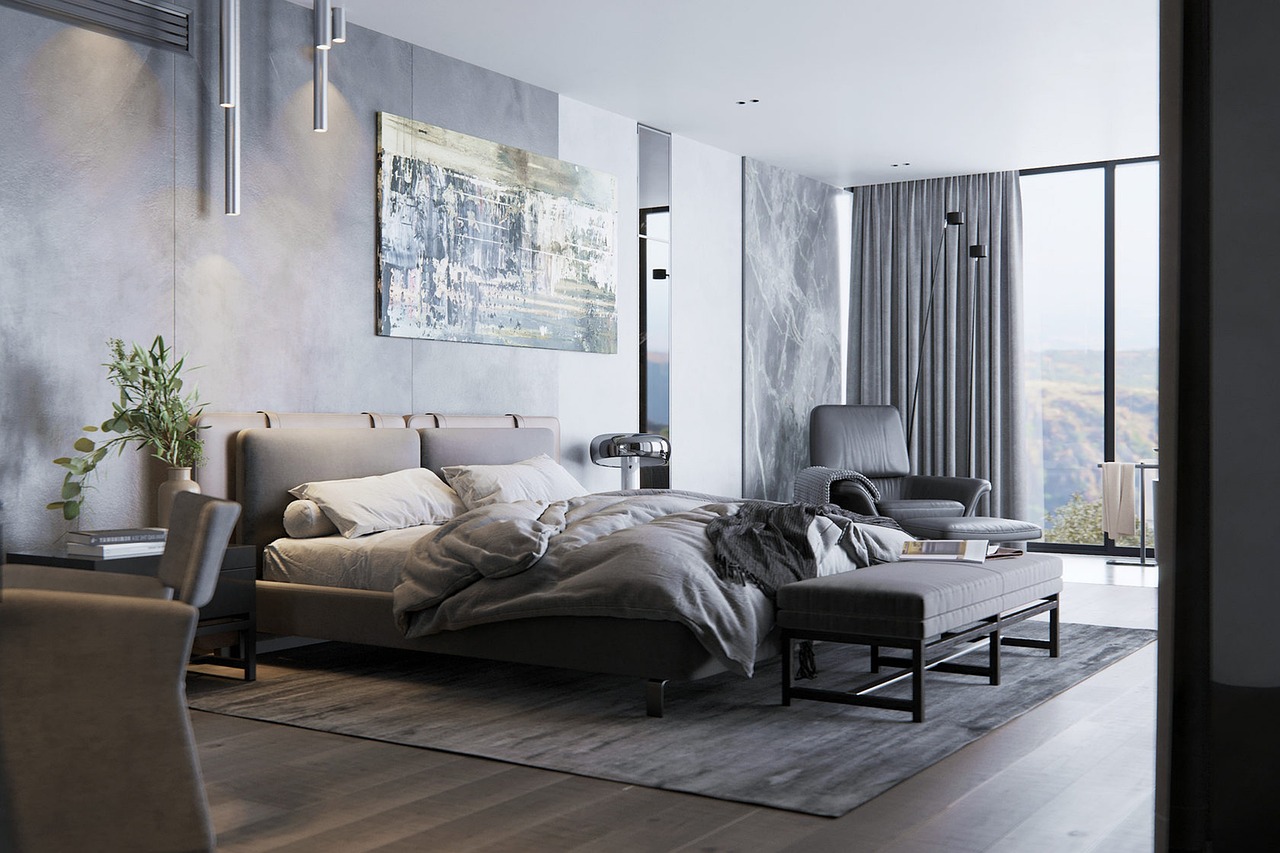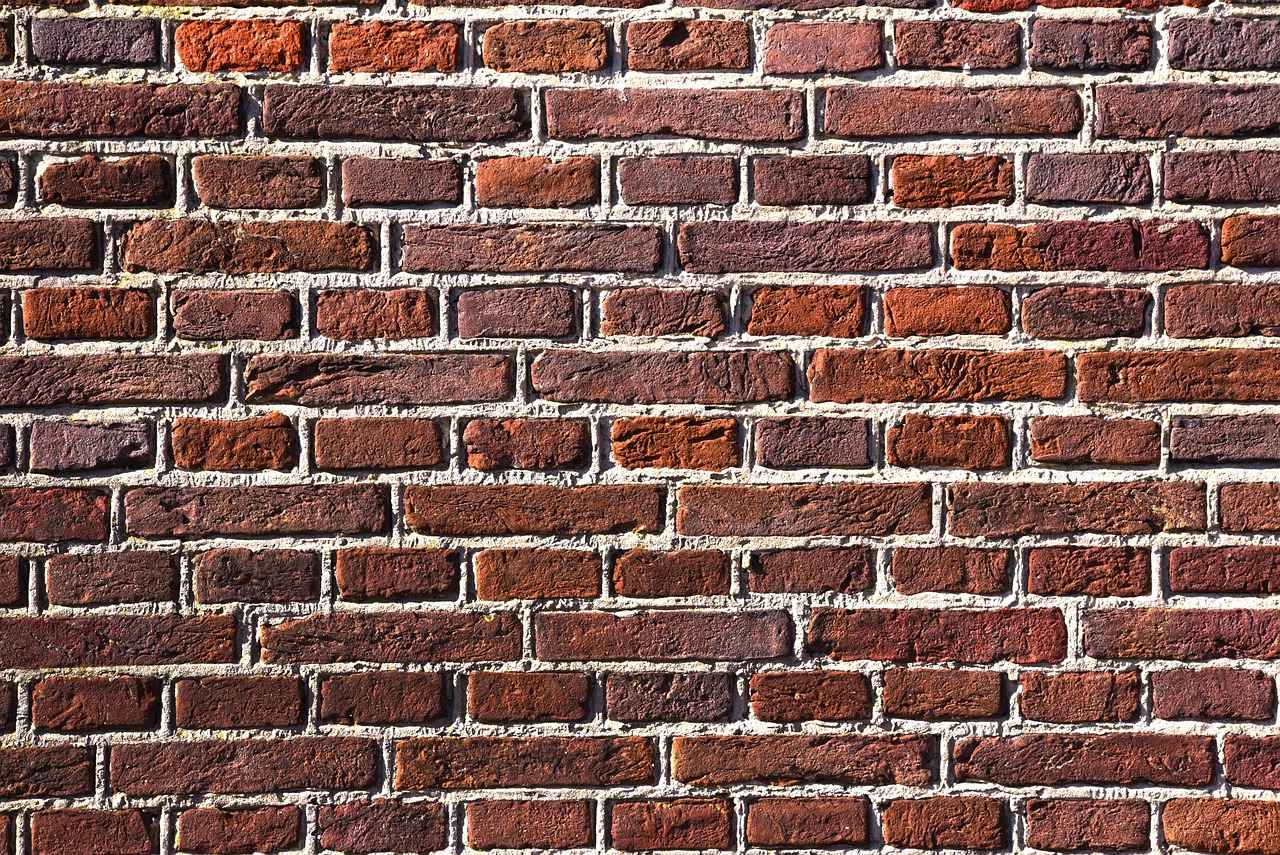As we step into 2025, the world of interior design continues to evolve, and wooden beds are at the forefront of this transformation. These designs not only offer a timeless aesthetic but also seamlessly blend style and functionality for modern homes. This article explores the latest trends, materials, and essential tips for selecting the perfect wooden bed that complements your space.
1. The Rise of Minimalism in Wooden Bed Designs
Minimalism remains a powerful influence in contemporary interior design. Wooden beds, with their clean lines and simple forms, embody this aesthetic, enhancing the bedroom without overwhelming it. The focus is on functionality while maintaining a serene atmosphere, making them ideal for modern living.
2. Popular Wood Types for Beds in 2025
Choosing the right wood is crucial for both durability and visual appeal. Here are some of the most popular wood types for wooden beds in 2025:
- Oak: Known for its strength and classic look, oak beds are versatile and fit well in various decor styles.
- Walnut: This rich, dark wood adds elegance and warmth, making it perfect for sophisticated interiors.
- Pine: An affordable option that offers versatility, pine can be customized to suit different design themes.
3. Eco-Friendly Wooden Bed Options
With sustainability becoming a priority for many consumers, eco-friendly options are gaining traction. Reclaimed wood and sustainably sourced materials not only reduce environmental impact but also provide unique character to your wooden bed.
4. Innovative Designs: Floating and Platform Beds
Floating and platform beds are increasingly popular for their modern appeal. These designs create an illusion of space and add a contemporary touch to any bedroom. Their low-profile design is perfect for achieving a sleek look.
5. Customizable Features in Wooden Beds
Customization is key in today’s market. Homeowners can tailor their wooden beds with features such as built-in storage, adjustable heights, and integrated lighting, ensuring both practicality and style.
6. Combining Wood with Other Materials
Mixing wood with materials like metal or upholstery can result in stunning designs. This combination not only enhances aesthetic appeal but also increases comfort, creating a welcoming environment.
7. Color Trends for Wooden Beds in 2025
Color plays a significant role in interior design. In 2025, expect to see a range of trends from natural wood finishes to bold painted options. These choices can dramatically transform the look and feel of your bedroom.
8. The Importance of Size and Scale
When selecting a wooden bed, size and scale are vital. Ensure the bed fits comfortably within your space, allowing for easy movement and accessibility. Consider room dimensions and ceiling height to make the best choice.
9. Maintenance Tips for Wooden Beds
To prolong the life of your wooden bed, proper maintenance is essential. Regular dusting, using coasters for drinks, and applying wood polish can keep your bed looking fresh and stylish for years to come. Avoid excessive moisture and direct sunlight to prevent damage.
In summary, wooden beds in 2025 are about more than just aesthetics; they represent a harmonious blend of design, functionality, and sustainability. By understanding the latest trends and materials, you can select a bed that not only enhances your space but also caters to your lifestyle needs.

1. The Rise of Minimalism in Wooden Bed Designs
Minimalism has emerged as a significant influence in the realm of interior design, particularly in the creation of wooden beds. This design philosophy emphasizes the beauty of simplicity, focusing on clean lines and functional forms that can transform any bedroom into a serene sanctuary. By eliminating unnecessary embellishments, minimalist wooden beds allow the natural beauty of the wood to take center stage, creating a calming atmosphere that promotes relaxation.
In 2025, the trend of minimalism continues to evolve, embracing innovative designs that resonate with modern sensibilities. The appeal of wooden beds lies not only in their aesthetic but also in their versatility. They can seamlessly integrate into various decor styles, from contemporary to Scandinavian, making them a favored choice for homeowners looking to create a cohesive look. The simplicity of these beds often enhances the overall space, making rooms feel larger and more open.
One of the defining features of minimalist wooden beds is their construction. These beds typically use high-quality wood that showcases natural grain patterns, adding character without overwhelming the senses. Natural finishes are particularly popular, as they highlight the wood’s inherent beauty while maintaining a sophisticated look. Additionally, minimalist designs often incorporate practical elements, such as built-in storage solutions, which enhance functionality without sacrificing style.
As consumers become increasingly aware of environmental issues, the demand for eco-friendly wooden bed options has surged. Many manufacturers now offer beds made from sustainably sourced materials or reclaimed wood, appealing to eco-conscious buyers. This shift not only supports sustainable practices but also aligns with the minimalist ethos of reducing waste and promoting longevity in furniture design.
Furthermore, the rise of technology has influenced the design of wooden beds. Many modern minimalist beds feature integrated technology, such as adjustable bases or built-in lighting, providing added convenience and enhancing the overall user experience. These innovations cater to the needs of today’s consumers, who seek both style and functionality in their furniture choices.
In summary, the rise of minimalism in wooden bed designs reflects a broader cultural shift towards simplicity and sustainability. By focusing on clean lines, natural materials, and functional features, these beds not only enhance the aesthetic of a bedroom but also contribute to a more mindful way of living. As we look forward to 2025, the fusion of minimalist principles with innovative design will undoubtedly continue to shape the future of bedroom furniture.

2. Popular Wood Types for Beds in 2025
When it comes to selecting a wooden bed, the type of wood you choose plays a crucial role in both durability and aesthetics. In 2025, homeowners are increasingly discerning about their choices, leaning towards woods that not only enhance the visual appeal of their bedrooms but also stand the test of time. This section delves into the most popular wood types for beds, including oak, walnut, and pine, along with their unique characteristics and benefits.
- Oak: The Timeless Classic
Renowned for its strength and longevity, oak is a favorite among those seeking a robust bed frame. Its natural grain patterns provide a classic look that can seamlessly fit into various decor styles, from traditional to contemporary. Additionally, oak is resistant to wear and tear, making it an excellent investment for long-term use.
- Walnut: Rich and Elegant
Walnut wood is celebrated for its deep, rich color and luxurious appearance. This wood type not only adds warmth to a bedroom but also exudes sophistication. The unique grain patterns of walnut can create stunning visual effects, making it a popular choice for modern designs. Its durability ensures that walnut beds remain a centerpiece in any room for years to come.
- Pine: Affordable and Versatile
Pine is often favored for its affordability and versatility. This softwood is easy to work with, allowing for a range of styles from rustic to modern. Pine beds can be easily customized with different finishes and colors, making them adaptable to various design themes. Although not as durable as oak or walnut, a well-maintained pine bed can last for years.
In addition to these popular options, there are other wood types worth considering:
- Maple: Strong and Dense
Maple is known for its hardness and stability. It offers a smooth surface that takes paint and stain very well, making it a great choice for those looking to customize their bed’s appearance.
- Cherry: Timeless Beauty
Cherry wood is prized for its rich color that deepens with age. It provides a classic, elegant look that appeals to many homeowners. Its fine grain and smooth texture make cherry a luxurious option for a wooden bed.
When choosing a wood type for your bed, consider not only the aesthetic appeal but also the functional aspects such as maintenance and durability. Each wood type has its unique characteristics that can complement your bedroom’s design while providing the necessary support and longevity for daily use. Ultimately, the right choice will depend on your personal style, budget, and the overall decor of your home.
3. Oak: The Timeless Classic
Oak is often celebrated as one of the most durable and versatile woods available, making it a premier choice for furniture, especially wooden beds. Its robust nature ensures that pieces crafted from oak can withstand the test of time, both in terms of physical wear and aesthetic appeal. This timeless wood is not only functional but also adds a touch of elegance to any bedroom setting.
One of the defining features of oak is its natural grain patterns. These patterns can range from straight and uniform to more intricate and swirling designs, allowing for a variety of styles to fit seamlessly into different decor themes. Whether you prefer a rustic farmhouse look or a more modern minimalist aesthetic, oak can be finished and styled to meet your needs.
In addition to its visual appeal, oak is known for its longevity. When properly maintained, oak wooden beds can last for generations. This durability is a significant factor for many homeowners, as investing in quality furniture means fewer replacements and lower costs in the long run. Moreover, oak is resistant to warping and cracking, ensuring that your bed will maintain its structural integrity over time.
Another aspect worth noting is oak’s eco-friendly attributes. Many oak products are sourced from sustainably managed forests, making them a responsible choice for environmentally conscious consumers. By choosing oak, you are not only investing in a beautiful piece of furniture but also supporting sustainable practices.
When it comes to the design possibilities, oak beds can be tailored to suit various tastes. From sleek platform beds to more ornate designs with intricate carvings, the possibilities are nearly endless. Additionally, oak can be stained in various shades, from light honey tones to deep, rich browns, allowing for personalization that matches your bedroom’s color scheme.
Furthermore, oak is highly compatible with other materials. Designers often combine oak with metals or upholstered elements to create unique and contemporary designs. This fusion not only enhances the aesthetic appeal but also adds functionality and comfort to the bed.
In terms of maintenance, oak beds require minimal effort to keep them looking their best. Regular dusting and occasional polishing will help maintain the wood’s natural beauty. Avoiding harsh chemicals and excessive moisture will also prolong the life of your oak bed.
In conclusion, oak remains a timeless classic in the world of wooden beds. Its durability, aesthetic versatility, and eco-friendly characteristics make it a top choice for those looking to invest in quality furniture. Whether you are redesigning your bedroom or simply looking to enhance your space, an oak bed is sure to provide both style and substance.
4. Walnut: Rich and Elegant
Walnut wood is often celebrated for its rich, dark hues and distinctive grain patterns, making it a favored choice in the realm of furniture design. When it comes to bedroom decor, walnut beds stand out as a symbol of luxury and elegance. This section delves into the myriad ways walnut beds can enhance the warmth and sophistication of contemporary bedrooms.
One of the most appealing aspects of walnut wood is its natural beauty. The deep chocolate tones and intricate grain lend a sense of depth and richness to any bedroom setting. Unlike lighter woods, walnut provides an inviting ambiance, creating a cozy retreat that is both modern and timeless. Its versatility allows it to pair seamlessly with various color palettes and design styles, from minimalist to eclectic.
- Warmth and Comfort: The warm undertones of walnut wood can create a calming atmosphere, making it an ideal choice for bedrooms. This warmth can be further accentuated with soft textiles and ambient lighting, enhancing the overall comfort of the space.
- Durability: Walnut is not only beautiful but also incredibly durable. Known for its ability to withstand wear and tear, walnut beds can last for generations, making them a worthwhile investment for any homeowner.
- Unique Character: Each piece of walnut furniture is unique, showcasing its own distinct grain patterns and color variations. This individuality adds character to the bedroom, ensuring that no two walnut beds are exactly alike.
In contemporary design, walnut beds can serve as striking focal points. Their rich tones can be complemented with lighter furnishings or vibrant accent colors, creating a balanced aesthetic. For instance, pairing a walnut bed with crisp white linens and colorful throw pillows can create a stunning contrast that highlights the bed’s luxurious appearance.
Moreover, walnut beds are available in various styles, from traditional to modern. Platform beds made from walnut offer a sleek, low-profile look that is perfect for minimalist spaces, while more ornate designs can add a touch of classic elegance to any room. The adaptability of walnut wood allows it to fit seamlessly into different interior design themes.
When considering the addition of a walnut bed to your bedroom, it’s essential to think about the overall design scheme. Incorporating walnut furniture can lead to a cohesive look, especially when other elements in the room, such as dressers and nightstands, are made from the same material. This consistency can enhance the visual flow and create a harmonious space.
In terms of maintenance, walnut wood requires minimal care to keep it looking its best. Regular dusting and occasional polishing can help maintain its luster, ensuring that your walnut bed remains a stunning centerpiece for years to come. Additionally, avoiding direct sunlight can prevent the wood from fading, preserving its rich color.
In conclusion, walnut beds are not just functional pieces of furniture; they are investments in style and comfort. Their deep colors and luxurious appearance can transform any contemporary bedroom into a sophisticated haven. By choosing a walnut bed, homeowners can enjoy the perfect blend of beauty, durability, and elegance, making it a timeless addition to their living space.
5. Pine: Affordable and Versatile
Pine wood has emerged as a popular choice for those seeking a budget-friendly yet stylish option for their bedroom furniture. Its natural beauty and versatility make it an ideal material for wooden beds, allowing homeowners to achieve their desired aesthetic without breaking the bank. This section delves into how pine wooden beds can be customized to fit various design themes, ensuring that they complement any interior style.
One of the standout features of pine beds is their customizability. Pine is easily shaped and finished, making it suitable for a range of designs from rustic to modern. Homeowners can choose from a variety of stains and paints, allowing them to achieve the perfect hue that matches their decor. For instance, a light stain can enhance the natural grain of the wood, creating a fresh and airy feel, while a darker finish adds a touch of elegance and warmth.
Moreover, pine beds can be designed with unique features that cater to individual preferences. Here are some ways in which pine beds can be customized:
- Headboard Styles: Pine beds can be constructed with various headboard designs, from simple and sleek to intricately carved patterns, allowing homeowners to express their personal style.
- Storage Solutions: Incorporating built-in storage options, such as drawers or under-bed compartments, maximizes functionality without sacrificing aesthetics. This is especially beneficial for smaller spaces.
- Size Variations: Pine beds can be made in different sizes, accommodating everything from twin to king sizes, ensuring that they fit perfectly in any bedroom layout.
- Finish Options: The choice of finish can dramatically alter the appearance of a pine bed. Matte finishes offer a contemporary look, while glossy finishes can add a touch of sophistication.
In addition to customization, pine wood is known for its durability and strength. Despite being lightweight, pine can withstand daily use, making it a practical choice for families and individuals alike. Its natural resistance to wear and tear ensures that a pine bed will remain a staple in the bedroom for years to come.
Furthermore, pine’s affordability does not compromise its ability to blend seamlessly with other materials. Many designers are now combining pine with metals or upholstered elements to create striking contrasts that enhance the overall design. For example, a pine bed frame paired with a metal headboard can create a chic industrial look, while an upholstered headboard adds a touch of softness and comfort.
As sustainable living becomes increasingly important, pine wood is also a great choice due to its renewability. Many pine products are sourced from sustainably managed forests, making them an eco-friendly option for conscientious consumers. This aspect not only appeals to environmentally aware buyers but also adds value to the purchase.
In summary, pine wooden beds offer an affordable and versatile option for anyone looking to enhance their bedroom decor. With endless customization possibilities, durability, and eco-friendliness, pine beds can cater to various tastes and preferences. Whether you’re aiming for a minimalist design or a bold statement piece, pine is a material that can adapt to your vision while remaining budget-friendly.
6. Eco-Friendly Wooden Bed Options
Sustainability has become a pivotal concern for consumers in recent years, influencing their purchasing decisions across various sectors, including furniture. As the demand for eco-friendly products rises, wooden beds made from sustainable materials are increasingly becoming a popular choice for environmentally conscious buyers. In this section, we will explore the various eco-friendly options available for wooden beds, focusing on reclaimed wood and sustainably sourced materials.
Reclaimed wood is salvaged from old structures, such as barns, factories, and warehouses. By repurposing this wood, manufacturers can create stunning wooden beds that not only showcase unique character and history but also contribute to environmental conservation. The process of reclaiming wood reduces the need for new lumber, thereby minimizing deforestation and lowering carbon emissions associated with logging.
- Unique Aesthetic: Each piece of reclaimed wood has its own story, evident in its distinct grain patterns and colors.
- Durability: Often, reclaimed wood is denser and more robust than newly harvested wood, making it a long-lasting choice.
- Support for Local Economies: Many reclaimed wood products are sourced locally, supporting small businesses and artisans.
In addition to reclaimed wood, sustainably sourced materials are another excellent option for eco-friendly wooden beds. These materials are harvested from responsibly managed forests that adhere to strict environmental standards. Certifications such as FSC (Forest Stewardship Council) ensure that the wood is sourced in a way that protects biodiversity and supports local communities.
- Environmental Responsibility: Choosing sustainably sourced wood helps preserve forests and ecosystems.
- Transparency: Sustainable wood suppliers often provide detailed information about their sourcing practices, allowing consumers to make informed choices.
- Quality Assurance: Sustainably sourced wood is typically of high quality, ensuring that your wooden bed will stand the test of time.
Beyond the type of wood used, the finishes applied to wooden beds can also impact their sustainability. Eco-friendly finishes, such as water-based paints and natural oils, minimize harmful emissions and are safer for indoor air quality. These finishes enhance the beauty of the wood while ensuring that the overall product remains environmentally friendly.
When selecting an eco-friendly wooden bed, consider the following:
- Look for Certifications: Choose products with certifications like FSC to ensure responsible sourcing.
- Research the Manufacturer: Support brands that prioritize sustainability and ethical practices.
- Consider the Lifespan: Invest in a bed that is built to last, reducing the need for replacements and waste.
In conclusion, eco-friendly wooden bed options, including reclaimed wood and sustainably sourced materials, offer consumers a chance to make responsible choices without sacrificing style or quality. As sustainability continues to shape consumer preferences, these options will likely grow in popularity, encouraging manufacturers to innovate further in the realm of eco-friendly furniture.
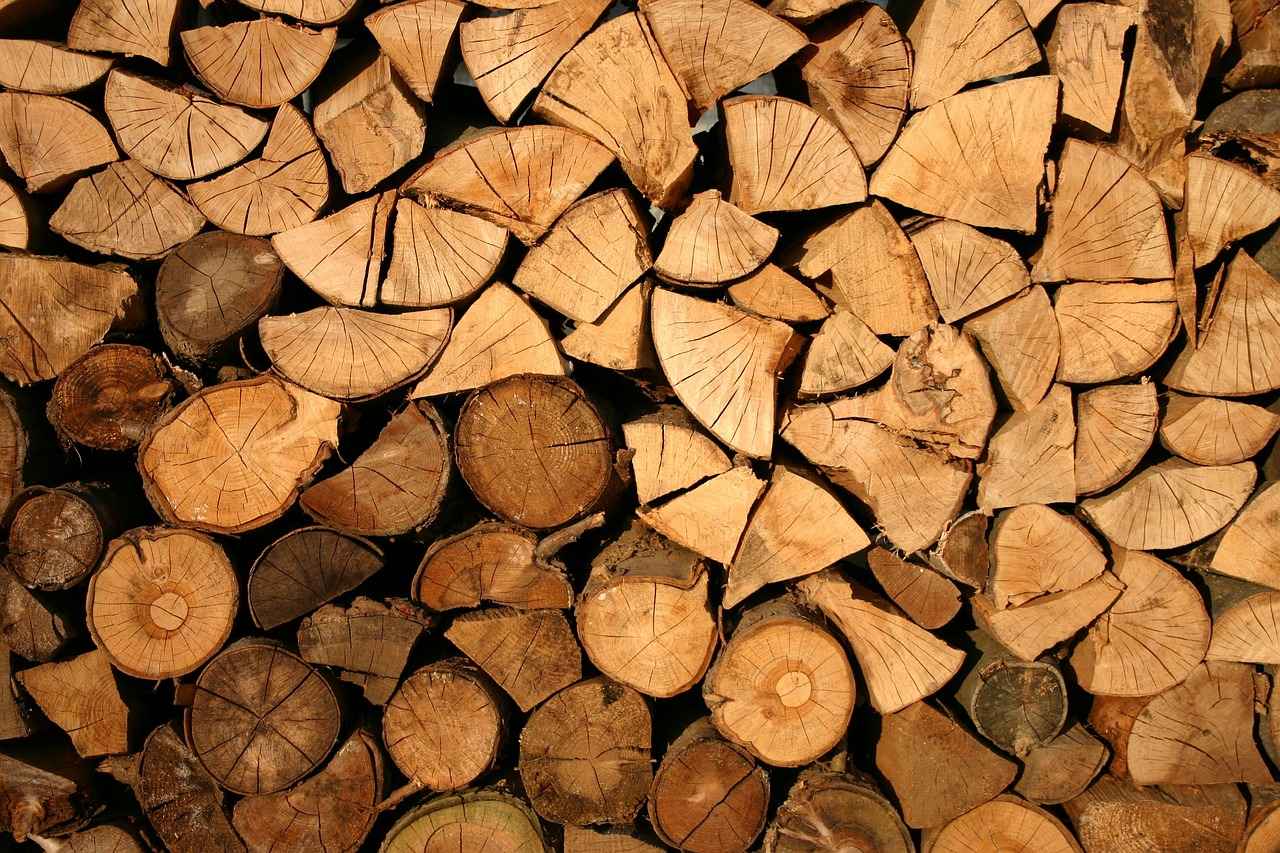
7. Innovative Designs: Floating and Platform Beds
In recent years, floating and platform beds have surged in popularity, becoming a staple in modern bedroom design. These innovative bed styles not only enhance the aesthetic appeal of a room but also offer practical benefits that align with contemporary living.
One of the key features of floating beds is their ability to create an illusion of space. By lifting the bed off the ground, these designs allow for more visible floor area, making the room appear larger and more open. This is particularly beneficial in smaller bedrooms where maximizing space is essential. The minimalist design of floating beds, often characterized by sleek lines and a lack of bulky frames, contributes to a clean and uncluttered look.
Platform beds, on the other hand, are known for their sturdy construction and low-profile design. These beds eliminate the need for a box spring, as they typically feature a solid base that supports the mattress directly. This design choice not only enhances the bed’s modern appeal but also provides a firmer sleeping surface, which can be beneficial for those who prefer a more supportive feel.
Both floating and platform beds are available in a variety of materials, including wood, metal, and upholstered options. Wooden floating beds can add a touch of warmth and natural beauty to a space, while metal platform beds often lend an industrial edge. Upholstered options provide a cozy and inviting look, making them suitable for a range of design aesthetics.
| Design Feature | Floating Beds | Platform Beds |
|---|---|---|
| Height | Elevated off the ground | Low-profile design |
| Support | Typically uses slats | Solid base, no box spring needed |
| Style | Minimalist and modern | Versatile, can be modern or traditional |
| Space Illusion | Creates a sense of openness | Can appear more substantial |
Another advantage of these bed styles is their customizability. Many manufacturers offer options to tailor the design to individual preferences, including different finishes, sizes, and additional features like built-in storage or integrated lighting. This flexibility allows homeowners to create a bed that not only fits their personal style but also meets their functional needs.
In terms of decor, floating and platform beds can serve as a striking focal point in the bedroom. Their modern lines and unique silhouettes can be complemented with various accessories, such as bold bedding, decorative pillows, and stylish headboards. Additionally, pairing these beds with other contemporary furniture pieces can enhance the overall aesthetic of the room.
As we move further into 2025, the trend towards floating and platform beds shows no signs of slowing down. These designs not only cater to the demands of modern living but also embody a sense of contemporary elegance that appeals to a wide range of homeowners. Whether you’re looking to maximize space, enhance comfort, or simply update your bedroom decor, floating and platform beds offer a stylish and functional solution.
8. Customizable Features in Wooden Beds
Customization is a key trend in the world of wooden beds, allowing homeowners to design their sleeping spaces according to their unique preferences and requirements. In 2025, this trend is more pronounced than ever, as consumers seek not only style but also functionality in their bedroom furniture. This section delves into various customizable features that can enhance the overall experience of using wooden beds.
- Storage Options: One of the most significant advantages of customizable wooden beds is the ability to incorporate storage solutions. Many designs now offer built-in drawers, under-bed storage, or even headboards with shelving. This feature is particularly beneficial for smaller spaces, allowing homeowners to maximize their storage without compromising on style.
- Adjustable Heights: Another innovative feature gaining popularity is the adjustable height of the bed frame. This allows users to set their bed at a comfortable height for getting in and out of bed easily. Some designs even offer mechanisms to raise or lower the bed, catering to individuals with specific mobility needs or preferences.
- Integrated Lighting: Modern wooden beds can also come with integrated lighting solutions. This can include LED strips under the bed or built-in reading lights on the headboard. Such features not only enhance the ambiance of the bedroom but also provide practical lighting options for nighttime reading or navigation.
- Personalized Finishes: Homeowners can choose from a variety of finishes, stains, and colors to tailor their wooden bed to fit their decor. Whether opting for a natural wood finish to maintain a rustic charm or a bold paint color for a modern twist, the customization options are virtually limitless.
- Unique Design Elements: Customization extends beyond functionality to include aesthetic elements. Homeowners can select specific design features like tufted upholstery on the headboard, carved details on the frame, or even custom shapes that reflect their personal style.
These customizable features not only enhance the functionality of wooden beds but also allow homeowners to express their personal style. As trends continue to evolve, the demand for beds that cater to individual needs and preferences will likely grow.
Moreover, the integration of technology in bed design is an emerging trend. Smart beds with features like adjustable firmness, sleep tracking, and even climate control are becoming more popular. These high-tech options provide an additional layer of customization, ensuring that every aspect of the bed can be tailored to the user’s comfort.
Ultimately, the ability to customize wooden beds is transforming the way we think about bedroom furniture. It allows for a more personalized sleeping environment that not only meets practical needs but also aligns with the homeowner’s aesthetic vision. As we move further into 2025, the trend of customization in wooden beds is expected to continue flourishing, making it an exciting time for those looking to invest in new bedroom furniture.
9. Combining Wood with Other Materials
In the world of interior design, the combination of materials can significantly transform the aesthetic and functional appeal of a space. Combining wood with materials like metal or upholstery not only creates unique bed designs but also enhances the overall comfort and style of a bedroom. This section delves into the various ways in which these combinations can elevate your sleeping space.
Wood, with its natural warmth and texture, serves as an excellent base for bed designs. When paired with metal accents, such as iron or steel frames, the result is a striking contrast that adds a modern edge to traditional wooden beds. For instance, a wooden bed frame with a sleek metal headboard can create a focal point in the room, blending rustic charm with industrial chic. This combination is particularly popular in contemporary designs, where clean lines and bold statements are essential.
Moreover, the use of metal components not only enhances visual interest but also improves durability. Metal can provide structural support, making the bed more stable and long-lasting. This is especially beneficial for larger bed sizes, where the weight of the mattress and bedding can strain the wooden frame. By incorporating metal, you ensure that your bed can withstand daily use while maintaining its style.
On the other hand, upholstered elements introduce a sense of luxury and comfort that wood alone may not provide. A wooden bed with a plush, upholstered headboard can create a cozy atmosphere, inviting relaxation and comfort. Upholstered headboards come in various fabrics, from soft velvets to durable leathers, allowing homeowners to choose a texture that complements their decor. This combination not only enhances comfort when sitting up in bed but also adds an element of sophistication to the design.
Additionally, the color palette of the upholstery can play a significant role in the overall look of the bedroom. Neutral tones can create a calming environment, while bold colors can serve as a statement piece, drawing attention to the bed as the centerpiece of the room. This versatility makes upholstered wooden beds an appealing option for various design themes, from modern minimalism to eclectic styles.
Incorporating wood with other materials also opens up opportunities for creative customization. For example, a wooden bed frame can be designed with integrated shelving made of metal or glass, providing both functionality and style. This not only maximizes space but also allows for personal expression through decorative elements that can be displayed on the shelves.
Furthermore, combining wood with materials like glass can create an illusion of space, making a bedroom feel larger and more open. A wooden bed with glass side tables or a glass footboard can reflect light and enhance the brightness of the room, contributing to a more airy ambiance. This is particularly beneficial in smaller bedrooms where space optimization is crucial.
In conclusion, the fusion of wood with materials such as metal and upholstery offers a wealth of design possibilities that cater to both aesthetic appeal and comfort. By embracing these combinations, homeowners can create unique bed designs that not only enhance the visual interest of their bedrooms but also provide the functionality and comfort needed for a restful night’s sleep. As trends continue to evolve, the integration of diverse materials will remain a key element in crafting stylish and inviting sleeping spaces.

10. Color Trends for Wooden Beds in 2025
Color trends are constantly evolving, and in 2025, the palette for wooden beds reflects a blend of nature-inspired hues and bold statements. This section delves into the exciting color options that are making waves in the world of wooden bed design.
One of the most significant trends is the use of natural finishes. These shades highlight the inherent beauty of the wood grain while adding warmth to a bedroom. Light oak and maple finishes are particularly popular, as they create a bright and airy feel, perfect for modern spaces. These finishes not only enhance the wood’s texture but also complement a variety of decor styles, from Scandinavian minimalism to rustic charm.
On the opposite end of the spectrum, bold painted options are gaining traction. Rich colors such as deep navy, forest green, and charcoal gray are being used to make a statement in bedrooms. These darker shades add a sense of drama and sophistication, creating a focal point that can transform a room. Pairing these beds with lighter bedding and accessories can create a stunning contrast, enhancing the overall aesthetic.
Another emerging trend is the use of pastel colors. Soft shades like blush pink, mint green, and powder blue are perfect for those looking to add a touch of whimsy to their space. These colors evoke a sense of calm and tranquility, making them ideal for a restful bedroom environment. Pastel-painted wooden beds can be easily paired with neutral furnishings, allowing for a serene and cohesive look.
In addition to these trends, the concept of two-tone designs is becoming increasingly popular. This approach involves combining two different colors or finishes on one bed, creating visual interest and depth. For instance, a bed frame may feature a natural wood finish with a painted headboard, offering a contemporary twist on traditional designs. This versatility allows homeowners to express their personal style while maintaining a cohesive look.
Moreover, the use of eco-friendly paints is on the rise, reflecting a growing consciousness about sustainability. Non-toxic, water-based paints not only minimize environmental impact but also ensure a safer indoor air quality. This trend aligns with the increasing demand for sustainable living solutions, making it easier for consumers to choose products that are both stylish and environmentally responsible.
As we look forward to 2025, the color trends for wooden beds are all about embracing individuality and creativity. Whether opting for natural finishes that celebrate the wood’s beauty or making a bold statement with vibrant colors, there are endless possibilities to enhance bedroom aesthetics. By selecting the right colors, homeowners can create a personal sanctuary that reflects their unique tastes and preferences.
In conclusion, understanding the latest color trends is essential for anyone looking to refresh their bedroom with a new wooden bed. From natural finishes to bold hues, the options are diverse and exciting, ensuring that every homeowner can find a style that resonates with their vision and enhances their living space.

11. The Importance of Size and Scale
When it comes to designing your bedroom, one of the most crucial aspects is selecting the right size and scale for your wooden bed. The bed is often the focal point of the room, and its dimensions can significantly impact the overall functionality and aesthetics of the space. Understanding how to choose the perfect bed size based on your room dimensions can help you create a harmonious and inviting atmosphere.
Understanding Room Dimensions
Before you start shopping for a wooden bed, it’s essential to take accurate measurements of your bedroom. Consider the following factors:
- Room Length and Width: Measure the length and width of your room to determine how much space is available for a bed.
- Ceiling Height: The height of your ceiling can influence your choice, especially if you are considering tall headboards or canopies.
- Door and Window Placement: Ensure that the bed placement does not obstruct doors or windows, which can affect natural light and accessibility.
Choosing the Right Bed Size
Once you have your room measurements, you can begin to consider the appropriate bed size. Here’s a breakdown of common bed sizes and their suitability for different room dimensions:
| Bed Size | Dimensions (inches) | Recommended Room Size |
|---|---|---|
| Twin | 38 x 75 | 8 x 10 ft |
| Full | 54 x 75 | 10 x 12 ft |
| Queen | 60 x 80 | 10 x 14 ft |
| King | 76 x 80 | 12 x 14 ft |
Scale and Proportion
While size is important, scale and proportion also play vital roles in achieving a balanced look. A large bed in a small room can make the space feel cramped, while a small bed in a large room may seem lost. Here are some tips to ensure the bed fits well within the space:
- Leave Adequate Space: Aim to leave at least 24 inches of walking space around the bed to allow for easy movement.
- Consider Other Furniture: Ensure that the bed size complements other furniture pieces in the room, such as nightstands and dressers.
- Visual Weight: Choose a bed design that matches the visual weight of other elements in the room. A chunky wooden bed may require a more substantial decor style.
Final Thoughts
In conclusion, selecting the right size and scale for your wooden bed is essential for creating a functional and aesthetically pleasing bedroom. By carefully measuring your room and considering the bed’s dimensions in relation to other furnishings, you can ensure that your bed not only fits well but also enhances the overall design of your space. Remember, a well-chosen bed can transform your bedroom into a stylish and comfortable retreat.

12. Maintenance Tips for Wooden Beds
Wooden beds are not only a stylish addition to your bedroom but also a long-term investment. Proper care can significantly extend the life of these beautiful pieces of furniture. This section offers practical maintenance tips to keep your wooden bed looking fresh and stylish for years to come.
- Regular Dusting: Dust accumulates on wooden surfaces, dulling their finish. Use a soft, lint-free cloth to gently wipe the bed frame at least once a week. For intricate designs, consider using a soft-bristle brush to reach crevices.
- Cleaning: Occasionally, use a damp cloth with a mild soap solution to clean the surface. Avoid soaking the wood, as excess moisture can lead to warping. Always dry the surface immediately with a clean, dry cloth.
- Polishing: To maintain the natural shine of your wooden bed, apply a high-quality wood polish every few months. This not only enhances the appearance but also provides a protective layer against scratches and stains.
- Temperature and Humidity Control: Wood is sensitive to environmental changes. Keep your bedroom at a stable temperature and humidity level to prevent the wood from expanding or contracting. Ideally, maintain humidity levels between 30-50%.
- Avoid Direct Sunlight: Prolonged exposure to sunlight can fade the color of your wooden bed. Position your bed away from direct sunlight or use curtains to block harsh rays during peak hours.
- Check for Loose Screws: Over time, screws and bolts may loosen due to regular use. Periodically check and tighten any loose fittings to ensure the stability and safety of your bed.
- Use a Mattress Protector: A good-quality mattress protector can help prevent spills, stains, and dust mites from reaching the wooden frame. This is a simple yet effective way to maintain cleanliness.
- Repair Scratches Promptly: If you notice any scratches or dents, address them immediately. Use a wood filler or touch-up marker that matches the finish of your bed to restore its appearance.
- Rotate Your Mattress: To ensure even wear, rotate your mattress regularly. This practice not only extends the life of your mattress but also helps maintain the support of the bed frame.
- Professional Maintenance: If your wooden bed requires significant repairs or refinishing, consider hiring a professional. They can restore your bed to its original glory while ensuring it remains structurally sound.
By following these maintenance tips, you can ensure your wooden bed remains not just a beautiful centerpiece in your bedroom, but also a durable and functional piece of furniture for many years. Regular care will enhance its natural beauty, ensuring it complements your home’s aesthetic while providing comfort and support.
Frequently Asked Questions
- What are the benefits of choosing a wooden bed?
Wooden beds offer a blend of durability, aesthetic appeal, and versatility. They can complement various interior styles, from rustic to modern, and provide a sturdy foundation for a good night’s sleep.
- Which wood type is best for a wooden bed?
The best wood type depends on your preferences and budget. Oak is known for its strength, walnut for its elegance, and pine for its affordability and versatility. Each offers unique characteristics that can enhance your bedroom decor.
- How can I customize my wooden bed?
Customization options for wooden beds include features like built-in storage, adjustable heights, and integrated lighting. These additions not only enhance functionality but also allow you to tailor the bed to your specific needs.
- Are there eco-friendly options for wooden beds?
Absolutely! Eco-friendly wooden beds made from reclaimed wood or sustainably sourced materials are increasingly popular. They provide a stylish option while also being kind to the environment.
- What maintenance do wooden beds require?
To keep your wooden bed looking great, regular dusting and occasional polishing are essential. Avoid excessive moisture and direct sunlight to prevent damage, ensuring your bed remains a stunning centerpiece for years.


